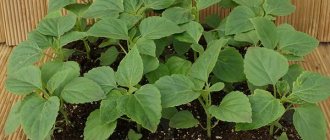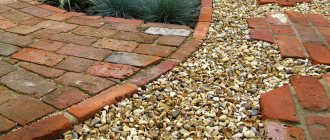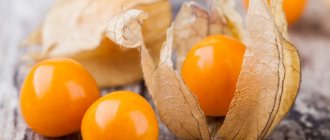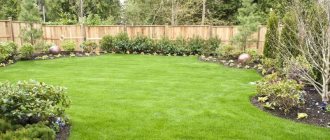What is an aerator
From the name it is clear that this is a kind of instrument for saturating with air. Of course, soil, if we are talking about lawns. Its task is to pierce the compacted turf, loosening it a little, allowing air to penetrate to the roots. According to the piercing method, two types of aerators are known:
- Using a thin tube to a given depth vertically and extracting the core. This is the highest quality method. The soil around the hole is not compacted, the effect is longer. The disadvantage is that these machines are very expensive, and manual ones of a similar design are now practically not produced.
- With a sharp thin pin. Disadvantage: The soil around the hole becomes compacted. The effect can be reduced by increasing the quantity while decreasing the diameter of the pins. In addition, moving the rod up and down at different angles virtually eliminates compaction by loosening the soil around the holes.
Mechanical aerators
Aerating a lawn with mechanical aerators is a very labor-intensive task, so they are used only in small areas. The simplest tools for this are ordinary forks for piercing turf to a depth of 15 cm, or a rake with thin sickle-shaped steel teeth. They can pierce the soil to a very shallow depth, or make an incision, removing a layer of compacted grass and moss. A more advanced version is the drum aerator. When it is rolled over the lawn, sharp pins, evenly spaced on the surface of the cylindrical drum, leave punctures in the turf.
The foot-operated mechanical tubular lawn aerator deserves special attention. It consists of a frame to which 3-4 tubes with an internal diameter of 10-15 mm are welded. When you press on it with your foot, the tubes are pressed in, filling with turf. The next time you press in a different place, the next portion of the turf is pressed in, and the core from the previous puncture is thrown out through the upper hole. However, due to their high labor intensity, foot aerators are not very common.

Much more popular are sandals for lawn aeration with sharp pins on the sole. They are worn over shoes or boots, and the desired effect is achieved by “walking” in such “shoes” across the lawn, trying to make punctures evenly over its entire area.

Aeration Tools
The most common and frequently used tools for piercing the soil are forks and rakes, since everyone has them. In addition to them, there are other devices: sandals and rollers with spikes, mechanical, electric, gasoline verticutters and scarifiers. Of course, working with machines is much more convenient and simpler, but they are not cheap, so if you don’t have the money to buy a scarifier or verticutter, you can easily get by with improvised means that every gardener has.
Did you know? The ancient Roman emperor Claudius Caesar (41–54 AD) tried to work in the garden as often as possible, doing, in modern terms, landscape design. He especially liked roses, which he grew in large quantities.
Automatic devices
These include electric and gasoline devices. The electric aerator consists of spiked wheels driven by an electric motor. It has several disadvantages. This device runs on electricity and there is a constant cord plugged into the outlet to power it - this is very inconvenient, especially if the lawn is located far from the power supply. Another disadvantage is that the device, which runs on electricity, heats up quickly and must be allowed to cool.
There are different types of electric aerators. Those that cost less are not equipped with a grass catcher - all the dry grass remains on the lawn and must be collected manually. There are electric units that perform two operations at once, scarification and aeration. They are equipped with two replaceable shafts: on one there are spokes, on the second there are cutters.

There are battery-powered devices, but even in this case, not everything is as good as it might seem. Of course, the electric cord does not follow them, but the battery, which supplies the necessary electricity, is designed for a certain period of continuous operation, after which it must be charged. When purchasing such a unit, you need to pay attention to the capacity of its battery.
A gasoline device is more powerful than an electric one, but costs much more. Its advantage over an electric unit is that it is autonomous and has higher performance. But during operation, the gasoline unit is noisier.
Also check out the use of dwarf conifers in landscape design.
When choosing an automatic machine model, the following characteristics must be taken into account:
- power and service life;
- case material (it must be made of durable plastic);
- presence and size of the grass catcher;
- presence of an adjustable handle;
- what metal the cutters are made of (they must be high quality steel) and how securely they are fastened.
With a pitchfork
If there are no special devices for aeration, you can use ordinary forks. They pierce the ground to a depth of 10 cm, this is quite enough. But aeration with a pitchfork can only be done on small lawns, since this method takes a lot of time and effort.

Sandals
Another fairly simple and affordable piercing device is sandals with vertical spikes. They put them on their feet and walk across the lawn, leaving punctures. But this method, just like aeration with a pitchfork, is only suitable for small areas, because walking in them is difficult and your legs will get tired quickly.
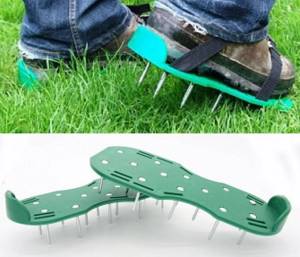
You should not carry out aeration in extreme heat, otherwise you may not help the lawn acquire an attractive appearance, but, on the contrary, completely ruin it.
Electric and gasoline aerators
Some of these models are sometimes purchased for lawn care on private country estates. Structurally, they repeat the principle of a mechanical drum, but have incomparably higher productivity. There are aerators powered by electricity - their advantages are obvious: environmental friendliness, low noise level and quite high power. The disadvantage is also known - the range is limited by the length of the cable to the power source. Rechargeable models are more autonomous, but require constant battery charging.
The most powerful of these cars are gasoline. Their disadvantages are also known - problems with fuel and a lot of noise. Specialized aerators of this type have significant productivity, so they are often used in agriculture or when servicing large areas. On country lawns, such units, which look like tractors, are used extremely rarely. For small areas, more universal machines that combine several functions are generally used.
Aeration devices
Lawn care
The lawn needs special attention. Competent care
For large areas
The owner of the device should also handle it carefully. Such a homemade mechanical device significantly increases the time spent on aerating the lawn.
– a flat sole, equipped with special spikes, is attached to the gardener’s boot;
- How to install a chain-link fence with your own hands in order to get a high-quality and beautiful fence for the site as a result.
- Combing the lawn - video example
In addition to garden forks and hand aerators, there is also more professional equipment - a slitter, which creates thin stripes in the soil, which at the same time cut off the roots of the grass. Slitters are suitable for large areas of lawn that require aeration because... The manual process in this case is very labor-intensive.
Manual technique
As for warm-season lawn grasses (for example, Bermuda grass), aeration carried out in the spring or at the very beginning of summer is optimal for them.
Creating and installing a lawn always begins with the aeration process. Lawn aeration is soil drainage. The type of soil and its moisture content should be taken into account. For example, drainage should be improved to aerate clay or wet soils. To do this, use both a regular shovel and special equipment. Forks, rakes or special spikes are suitable for aerating the lawn. To create a lawn, the aeration depth can be about 8-10 centimeters. This is quite enough for the normal and healthy development of grass.
- After the soil has dried (usually a couple of days after aeration), the soil must be leveled with a rake. Pricking
- winter lawn
- Some craftsmen make devices that operate on electrical power. roller
Often used as a lawn grass, bentgrass - rules for planting and caring for such a lawn.
Verticutters and scarifiers
What it is? In simple terms, it’s a rake on wheels. The word comes from the English vertical cutter - vertical cutter. Slightly curved thin steel teeth cut into the soil as they move, tearing out dried plants, dead roots, mown grass and other debris from the turf. A lawn verticutter, electric, battery-powered or gasoline-powered, is the same as a rake on a rotating drum. The height of its rise determines whether it will work as an aerator or verticutter. Therefore, these machines are often called verticutter-aerator. Their cutting height is usually adjustable from 0 to 14 cm.
The scarifier works a little differently. For a lawn, this is an analogue of a comb, combing out old leaves, grass clippings and other debris caked on the soil. Its manual counterpart is a fan rake. Electric or gasoline scarifiers are equipped with a drum with wire tendrils on its surface. But for lawn care, it is advisable to have a universal tool. For example, a combination device with replaceable drums that can perform any function.
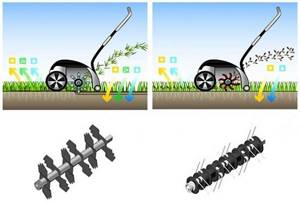
What is the difference between a verticutter and a scarifier?
Electric or gasoline vehicles can be self-propelled or non-self-propelled. Of course, the quality of work of models with wheel drive and the ability to regulate the speed of movement is much better due to the uniformity of processing, however, the cost of the product itself is somewhat higher.
Piercing Tools
The main device for aeration is a pitchfork. In this case, you can use ordinary garden models. However, in stores you can also find special equipment designed for aeration. Such tools have a specific tooth shape.
In addition, there are models designed for clay soil. In this case, the use of conventional models will not be effective. For this reason, it is necessary to use hollow tine forks. They help raise columns of earth to the surface. However, such models cannot be used on soil with a high sand content. Indeed, in this case, the earth will simply spill out of the hollow teeth.
Moreover, there are special devices designed for processing large areas. They are mechanical machines with different tooth shapes - solid, hollow, star-shaped, with edges, etc. With the help of such models, large areas can be effectively processed in the shortest possible time.
However, this technique is quite expensive. For this reason, it makes sense not to buy it, but to rent it. After all, the owner does not often need such tools. Moreover, for the care of small areas, manual equipment is quite sufficient.
Aeration: when and why?
The need for aeration in a particular area is determined by the condition of the rhizomes. To do this, a vertical cut of the turf is made with a shovel, and if the depth of their germination does not exceed 4–5 cm, then aeration is absolutely necessary. Compacted soil, covered with a layer of compacted grass clippings, leaves, and moss, prevents the penetration of water, nutrients and air to the roots, which inhibits plant development. As a result, bald spots and patches of yellowing grass appear as signs that the lawn care is clearly insufficient.
Aeration in this case is the easiest method to correct the situation.
Basic rules for lawn aeration
When processing a site, you should adhere to a number of simple rules. This approach will help you achieve high-quality results and take good care of your lawn. To do this, just listen to the following recommendations:
- After using a hollow tine fork, you must carefully collect the removed soil and remove it from the site.
- The grass and leaves collected during the procedure can be used as additional fertilizer. To do this, it is enough to place them near the root system of a bush or young tree.
- There are a large number of universal models for processing on the market. They have teeth whose length is adjustable. They can be used both for removing felt and for full piercing.
- If the soil has not been cultivated for a long time, compactions often appear in its lower layers. However, they may not respond to forks with standard tooth lengths. For this reason, to begin with, it is worth using tools that plunge 5-6 centimeters into the soil.
- It is best to remove felt in the spring, as it will serve as additional insulation in winter.
- Piercing should not be done too often. If the owner does not notice the above signs (spread of moss, rapid drying of grass, etc.), there is no need to rush to use the procedure.
These tips will help the owner make the lawn at home fresh, blooming and well-groomed!
Aeration rules
You can carry out aeration in small areas using sandals for aerating the lawn, a fork, or in larger areas, a gasoline or electric verticutter. A couple of days before starting work, the area needs to be watered to soften the soil. You can, if you're lucky, aerate your lawn the day after it rains, but not so much that it turns the ground into soggy mud.
Aeration of the lawn is done in rows with an overlap of 3–4 cm. If the turf is too dense, you may need another pass at 90° to the previous one. When, after 2-3 days, the clods of earth turned out of the lawns during work dry out, they need to be crumbled with a rake, then watered, and, if necessary, fertilized. If there are bald spots on the lawn, then before raking you should sow the seeds of the desired grass, level everything and water it generously.
Properly carried out aeration transforms the appearance of the lawn. Within a week, it becomes bright green, its growth rate increases, and its resistance to disease increases.
Under no circumstances should you aerate in hot weather, as this can cause irreparable damage to the grass carpet.
When using a pin aerator, the frequency of treatment can be 2–3 weeks; with a verticutter, as a rule, once a year. But when to apply the treatment depends on the type of grass. For cold-resistant ones, for example, fescue and bluegrass, the best time is autumn; if these are heat-loving crops, then in the spring. In cases where the lawn is actively used and heavily trampled, the work may have to be repeated 2 or even 3 times a season. It is also useful in dry summers - it will improve the access of moisture to the roots, and in rainy times it will allow excess moisture to evaporate, protecting them from rotting.
What is aeration
This process is necessary to ensure that the soil under the lawn is saturated with oxygen, allows more air, moisture and fertilizers to pass through, thereby improving root nutrition. During such work, gas exchange occurs: carbon dioxide penetrates into the ground layer, receiving oxygen in return. As a result, many intrasoil processes accelerate.
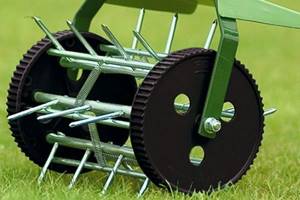
Such an event should be done for one more reason: the soil in the lawn is constantly compacted. This will happen due to walking on it and even from the vibrations of vehicles constantly passing by. It only gets worse: the density of the soil will not allow it to absorb water and, of course, will interfere with the normal development of the root system.
After aeration, the soil will absorb approximately 30% less water. This will result in plants being able to withstand dry periods longer.
This process becomes especially relevant in soil made of dense sandy layers, where gravel and sand are present. Moreover, such a phenomenon is not uncommon both in new lawns and in those that have been carefully looked after for a long time.
Verticulation and scarification: when to do and how often
When verticulating, rapidly rotating thin cutters cut deep into the soil, tearing out old roots, moss and compacted plant debris from the surface. As a rule, it is carried out twice a year: the main one in the spring (with aeration) and the surface one in the fall. In practice, the depth is chosen based on the age of the lawn, as well as the type of vegetation. The operation stimulates branching of the root system and grass growth. For very large processing depths, it is better to use a gasoline verticulator, as it is more powerful. Do not forget that after verticulation the soil condition is ideal for sowing, so it is advisable, if necessary, to stock up on appropriate seeds. Upon completion of work, the lawn must be watered thoroughly.
Scarification is a more gentle procedure than verticulation, so it can be done more often, say, 3-4 times a year. For example, in the spring, after the snow has melted, then in early June, when active grass growth begins, and also in the fall, in the first half of September. But you shouldn’t comb out the entire top layer of dead grass. There should be up to 0.5–1 cm left. With such a thickness, it will not impede the flow of air, but at the same time it will not allow moisture to evaporate too quickly. When scarifying, it is advisable to change the direction each time, say, 90°. After the procedure, you can lightly fertilize the lawn, add a little lime, and, if necessary, sow fresh seeds in the bald spots. If you have rod or tubular aerators, it is advisable to also aerate immediately after scarification, then the lawn should be watered abundantly.
What is lawn aeration and why is it needed?
Modern advances in the gardening industry make it possible to create a lawn “in minutes.” We are talking about roll covering, when finished, grown turf is transported from the manufacturer to the buyer. This technology is possible due to the characteristics of lawn grasses, forming a dense plexus of roots. The “mesh” turns out to be so tight that the earth does not spill through it when the turf is cut in strips.
On the one hand, this useful phenomenon allows you to quickly lay and repair lawns. On the other hand, the overgrowth becomes so dense that the access of water and air practically stops, causing the plants to die. To prevent this from happening, gardeners “ventilate” the root system by piercing the turf. The holes or cuts that are created allow air and water and nutrients to reach the roots of the lawn grasses.
About choosing a verticutter
This is the most popular type of machine, and although, due to its versatility, they do not perform all operations perfectly, nevertheless, it is quite enough to get fairly decent results. So, what should you pay attention to when choosing this device?
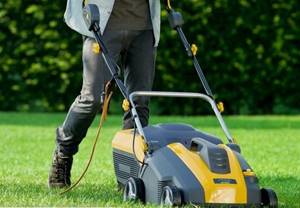
- The body should not be heavy, but durable, so as to cause less damage to the lawn. Good plastic or aluminum will do just fine. Professional samples have a steel body.
- Electric or petrol? When cutting knives deeply into the turf, there is a risk of stopping the motor, which is very dangerous for electric models, but does not at all affect the performance of gasoline models.
- Do you need a garbage disposal that fills up quickly and needs to be emptied very often, which greatly slows down the work. If you choose a verticutter without a garbage collector, you will have to collect garbage with a rake. Sometimes this option turns out to be more acceptable.
- Milling cutters or working cutters must be made of durable tool steel and secured with dampers to prevent the shaft from flying out or jamming.
- The immersion depth of the cutters should be adjusted using an external control knob in the range from 1–2 to 12–14 cm.
- The working width should be selected according to the desired productivity. For different household verticuters, it usually ranges from 20 to 60 cm.
- The handle of the machine must be adjustable to suit the height of the operator.
Rating of verticutters and scarifiers supplied to Russia:
| Brand | Variety | Characteristics |
| Makita UV3600 | electric scarifier, 1.8 kW | grip 36 cm, grass catcher 40 l, weight 15.3 kg, working depth +5, 0, -5, -10 mm |
| MTD OPTIMA 38 VO | gasoline, station wagon, 4-stroke engine, power 4.08 l. With. | 2 shafts, 3 operating modes, grip 38 cm, working depth 0–15 cm, weight 30 kg |
| Oleo-Mac SR 40 R45 | verticutter, gasoline 4.5 l. With. | grip 40 cm, grass catcher 50 l, working depth 5 mm, weight 50 kg |
| Stiga SV 415 E | electric verticutter aerator, 1.5 kW | grip 38 cm, grass catcher 50 l, working depth from +4.5 to -13 cm, weight 14.4 kg |
| Stiga SVP40B | Verticutter aerator, petrol, 4 l. With. | grip 40 cm, grass catcher 50 l, working depth up to 15 cm, weight 37 kg |
| Bosch AVR 1100 | electric scarifier, 1.1 kW | grip 32 cm, depth +5, 0, -5, -10 mm, weight 9.9 kg |



